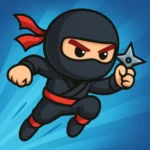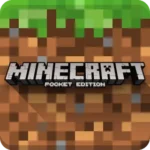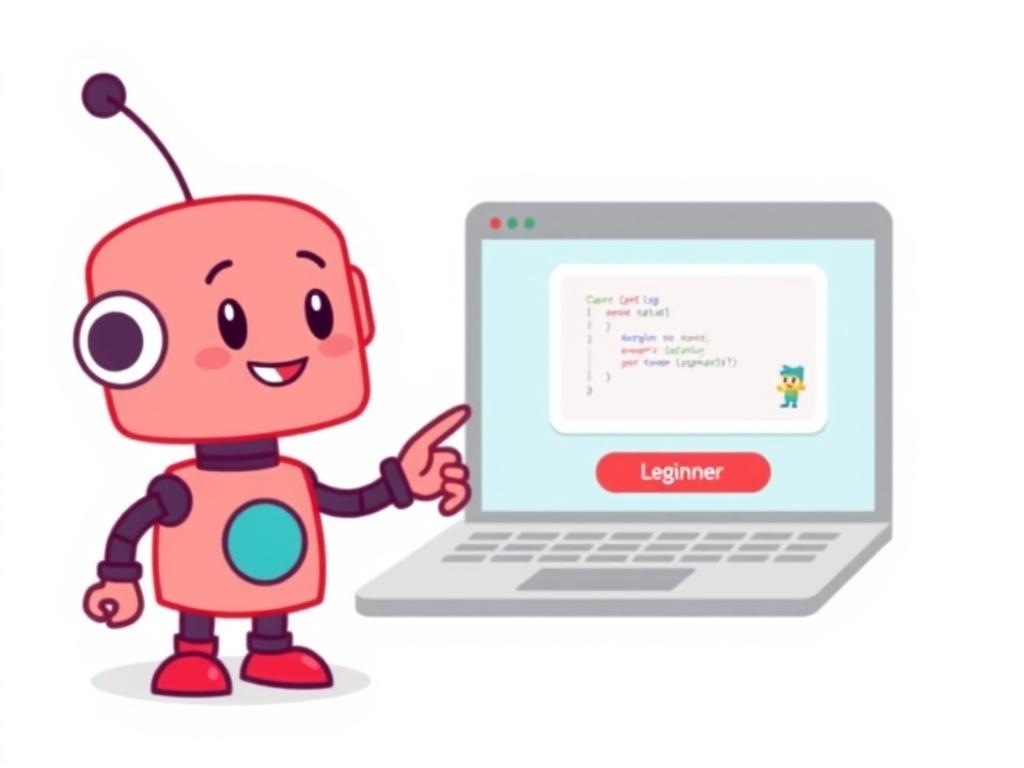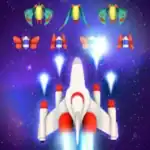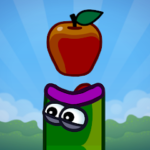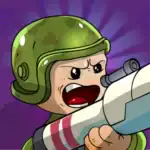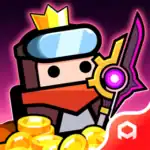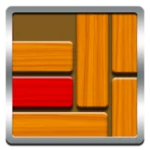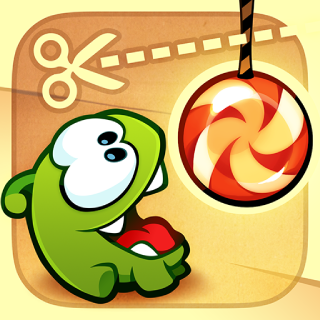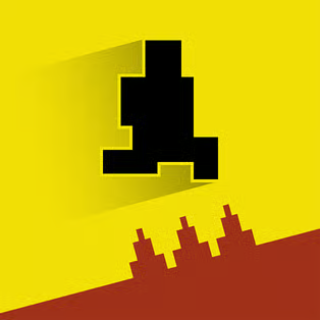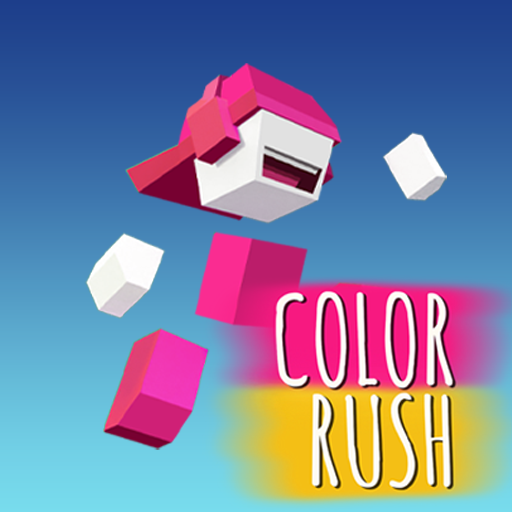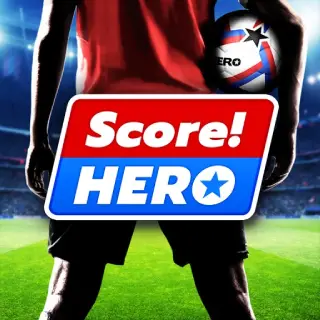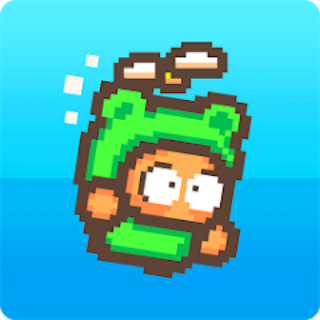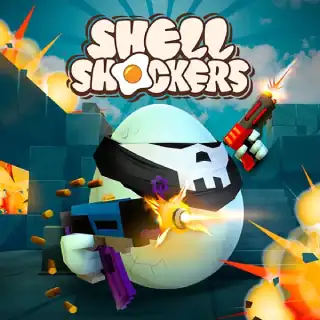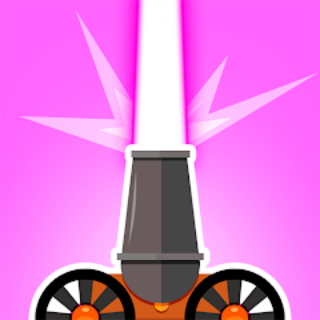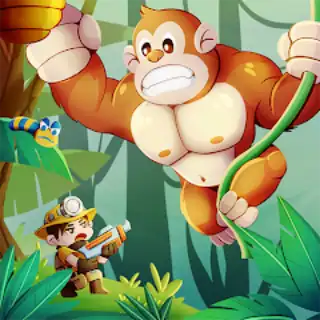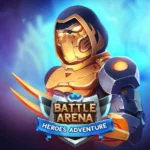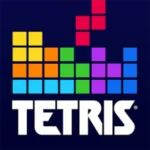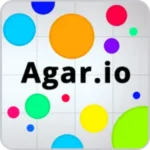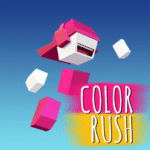A Beginner’s Guide to Creating Browser Games: Your Path to Unleashing Digital Worlds
The digital landscape is teeming with interactive experiences, and among the most accessible and widely enjoyed are browser games. From simple puzzles to complex multiplayer adventures, these games offer instant gratification without the hassle of downloads or installations. If you’ve ever found yourself lost in the captivating loops of an .io game or the strategic depths of an RPG browser game, you’ve witnessed the power of in-browser entertainment. But what if you could move beyond playing and start creating? This comprehensive guide is designed to empower aspiring developers, offering a clear, step-by-step pathway to build browser games from scratch. We’ll demystify the process, highlight essential tools, and navigate the exciting world of HTML5 game development, proving that anyone can craft their own DIY online games and join the ranks of game creators. Get ready to embark on a journey that transforms your creative visions into interactive realities, making your own game without needing deep programming knowledge from the start.
Understanding the Allure of Browser Games: Why They Are the Perfect Starting Point
Browser games occupy a unique and powerful niche in the gaming world. Their low barrier to entry for players—often just a click away on websites like Browser Games HQ—makes them incredibly popular. This same accessibility extends to development. Unlike console or PC games that demand specialized software, powerful hardware, and complex compilation processes, browser games primarily leverage technologies inherent to every web browser: HTML, CSS, and JavaScript. This foundational simplicity makes browser game development an ideal starting point for anyone looking to enter the world of game creation, especially game development for beginners. You don’t need a massive budget or a team of experts; a basic text editor and a browser are all you truly require to begin. The iterative nature of web development also means you can see your changes instantly, making learning and debugging much more straightforward.
Moreover, the reach of browser games is virtually limitless. With a web link, your game can be played by anyone, anywhere in the world, on almost any device with an internet connection. This global distribution potential, combined with the relative ease of development, makes the decision to create browser games a highly attractive proposition for aspiring game designers. Whether you dream of crafting a casual puzzle like 2048 Classic Number Game, a fast-paced action experience, or a sprawling browser-based RPG, the browser provides a versatile canvas. This section will delve into the core characteristics that define browser games and why they represent such a fertile ground for your initial game development endeavors.
What Defines a Browser Game?
At its core, a browser game is a video game played directly within a web browser using standard web technologies. This distinguishes them from games that require dedicated client software to be installed on a user’s device. Historically, Flash was the dominant technology for browser games, but with its deprecation, HTML5 game development has risen to prominence. HTML5, along with JavaScript and CSS, now forms the backbone of modern browser gaming. This shift has not only improved performance and security but also opened up new possibilities for cross-platform compatibility, allowing games to run seamlessly on desktops, laptops, tablets, and even mobile devices. The key advantage is the “instant play” factor; users don’t need to navigate complex installation wizards, making them incredibly user-friendly.
The simplicity of access often translates into a focus on compelling gameplay loops, quick sessions, and addictive mechanics. Think about the success of titles like Subway Surfers Online Free or Wordle – they are immediately engaging because there’s no friction between wanting to play and actually playing. This immediacy also means developers can rapidly prototype and iterate on their ideas, getting feedback quickly and adjusting their designs with agility. If you’re looking to make your own game and share it with the world quickly, browser games offer an unparalleled avenue.
The Evolution from Flash to HTML5 and Beyond
The history of browser gaming is a fascinating one, intricately linked with technological advancements. For many years, Adobe Flash Player was synonymous with online games. It enabled rich multimedia experiences directly within the browser, giving rise to iconic games and entire communities built around Flash portals. However, Flash had its limitations, including performance issues, security vulnerabilities, and a lack of mobile compatibility. As mobile browsing surged, the need for a more robust, open standard became clear.
Enter HTML5. Released in 2014, HTML5 brought native support for multimedia, graphics, and interactive elements directly into web browsers without the need for plugins. Combined with JavaScript for logic and CSS for styling, it offered a powerful and flexible platform for game development. The Canvas API, in particular, provided a drawing surface for 2D graphics, while WebGL extended this to 3D. This paradigm shift allowed developers to create browser games that were more performant, secure, and universally accessible. Today, advancements like WebAssembly are further pushing the boundaries, enabling near-native performance for complex games, blurring the lines between traditional desktop games and their browser-based counterparts.
Foundational Skills and Prerequisites: Your Developer Toolkit
Before you dive headfirst into coding your first browser game, it’s crucial to lay a solid foundation. While you don’t need to be a seasoned programmer, a basic understanding of certain web technologies will dramatically accelerate your learning curve and make the entire browser game creation process more enjoyable. Think of these as your essential building blocks. For game development for beginners, focusing on these core areas first will pay dividends.
HTML: The Structure of Your Game
HTML (HyperText Markup Language) is the backbone of any web page, including your game. It provides the structure and content. For a browser game, HTML typically defines the `
For instance, your game’s main drawing surface will be a `
CSS: Styling Your Game’s Visuals
CSS (Cascading Style Sheets) controls the visual presentation of your HTML elements. While many game visuals are handled directly by JavaScript drawing on the canvas, CSS is invaluable for styling loading screens, main menus, UI elements (buttons, score displays), and ensuring your game adapts nicely to different screen sizes. It allows you to control colors, fonts, layout, and responsiveness. For example, you might use CSS to center your game canvas on the screen or to create a visually appealing title screen. Mastering CSS will allow you to build browser games that not only function well but also look polished and professional, greatly enhancing the player experience.
JavaScript: The Brain and Logic
JavaScript is the undisputed king of HTML5 game development. It’s the programming language that breathes life into your game. JavaScript handles everything from game logic (scoring, collision detection, enemy AI) to user input (keyboard presses, mouse clicks) and rendering graphics on the canvas. It’s where you’ll implement your game loop, manage game states, and orchestrate all the interactive elements. For JavaScript games, understanding concepts like variables, functions, loops, conditionals, objects, and arrays is absolutely essential. Don’t be intimidated; start with the basics, and gradually build up your knowledge. Numerous online tutorials and courses are specifically tailored to beginner game dev in JavaScript.
A good starting point for JavaScript knowledge can be found at The Modern JavaScript Tutorial.
Basic Math and Physics Concepts
While you don’t need to be a physicist, a rudimentary understanding of geometry and basic physics concepts will be incredibly helpful for DIY online games. Concepts like coordinates (x, y), vectors (direction and speed), collision detection (overlapping rectangles or circles), and simple physics (gravity, friction) are fundamental to most games. For example, moving a character involves updating its x and y coordinates, and determining if two objects hit each other requires checking their positions and dimensions. Many game development frameworks abstract some of these complexities, but knowing the underlying principles will empower you to debug and customize your games more effectively.
Choosing Your Tools and Technologies: The Right Arsenal for Game Creation
Once you have a grasp of the foundational web technologies, the next step in browser game creation is selecting the right tools. While you can technically build browser games with just a text editor and a browser, using dedicated frameworks, libraries, and development environments can significantly streamline the process, allowing you to focus more on game design and less on low-level implementation. This section explores the array of free game dev tools available, guiding you to make informed choices for your first project.
Code Editors: Your Primary Workspace
A good code editor is your command center. It provides syntax highlighting, auto-completion, and often integrated terminals and debugging tools, making coding much more efficient and less error-prone. Popular choices include:
- VS Code (Visual Studio Code): Free, open-source, highly customizable, and extremely popular. It has excellent support for JavaScript, HTML, and CSS, and a vast ecosystem of extensions for game development. This is often the recommended choice for game development for beginners.
- Sublime Text: A lightweight, fast, and feature-rich text editor, popular for its speed and simplicity.
- Atom: Developed by GitHub, Atom is another free and open-source editor known for its hackability.
Choose one that feels comfortable and has good community support. Getting familiar with your chosen editor’s shortcuts and features will drastically improve your productivity when you make your own game.
HTML5 Game Frameworks and Libraries: Accelerating Development
While you can write pure JavaScript games from scratch, using a game framework or library saves you immense time by providing pre-built functionalities for common game development tasks. These frameworks handle things like rendering, input management, physics, and asset loading, letting you concentrate on your game’s unique logic. This is where the magic of HTML5 game development truly shines for beginners.
- Phaser: This is arguably the most popular HTML5 game development framework. It’s robust, well-documented, and has a huge community. Phaser simplifies sprite handling, animations, physics, input, and more, making it an excellent choice for beginner game dev projects. It supports both 2D and 3D (via WebGL) rendering and is incredibly versatile. Phaser’s official website offers tutorials and examples.
- PixiJS: A powerful 2D rendering library that focuses purely on high-performance graphics. It’s not a full game engine like Phaser, but if you need to build custom game logic and just need a fast way to draw things to the screen, PixiJS is fantastic. It’s often used as the rendering engine *within* other frameworks or custom engines.
- Babylon.js / Three.js: If your ambition extends to 3D browser-based games tutorial, these are the go-to libraries. Three.js is a general-purpose 3D library that provides a scene graph, cameras, lights, and rendering capabilities. Babylon.js is a more complete 3D game engine built on top of WebGL, offering more out-of-the-box features for game creation. Both require a deeper understanding of 3D concepts.
- Less common/simpler options: For very simple games or to understand core concepts, libraries like CreateJS (especially EaselJS for graphics) or custom lightweight engines can be considered.
For your first project, sticking with Phaser is highly recommended due to its comprehensive features and abundant learning resources.
Version Control: Git and GitHub
As you progress in browser game development, managing your code becomes crucial. Git is a version control system that allows you to track changes to your code, revert to previous versions, and collaborate with others. GitHub is a web-based platform that hosts Git repositories, providing a central place to store your code, share it, and manage projects. Learning basic Git commands (commit, push, pull) and setting up a GitHub repository for your game will be invaluable. It acts as a safety net, allowing you to experiment freely without fear of irrevocably breaking your project. Plus, having a public GitHub repository can serve as a portfolio for future endeavors.
Game Design Fundamentals for Browser Games: Crafting Engaging Experiences
Coding is essential, but a great game starts with great design. For DIY online games, where the immediate appeal is paramount, strong game design principles are even more critical. Before you write a single line of code, take time to conceptualize your game. This forethought will save you countless hours of re-work and frustration. Effective game design ensures your players will find your game engaging, accessible, and fun. This section lays out the fundamental principles to consider when you create browser games.
Concept and Scope: Start Small and Grow
For your very first browser game development project, the most common mistake is over-scoping. Don’t try to build the next Minecraft online game or a sprawling MMORPG right out of the gate. Start incredibly small. A simple Pong clone, a basic platformer with one level, a matching game like Gemmine Match 3, or a variation of the classic 2048 game are ideal first projects. These allow you to learn the core mechanics without being overwhelmed. Define your game’s core loop: What does the player do? What’s the goal? What’s the reward? Keep it simple, focused, and achievable. As a beginner game dev, successfully completing a small project is far more valuable than abandoning an overly ambitious one.
Core Mechanics and Gameplay Loop
Every game has a core set of mechanics that define how it’s played. For a platformer, it’s movement, jumping, and collision with obstacles. For a puzzle game, it might be matching tiles or solving logic problems. Define these mechanics clearly. More importantly, establish your game’s “gameplay loop”:
- **Action:** What does the player do? (e.g., move character, shoot, click a tile)
- **Result:** What happens in response to the action? (e.g., character moves, enemy takes damage, tile disappears)
- **Feedback:** How does the game communicate the result? (e.g., sound effect, visual animation, score update)
- **Goal/Challenge:** What is the player trying to achieve? (e.g., reach end of level, clear screen, beat high score)
A well-defined and enjoyable gameplay loop is the heart of any successful game, especially for browser-based games tutorial where immediate engagement is key.
User Interface (UI) and User Experience (UX)
UI/UX is paramount for browser game creation, as players expect intuitive and responsive controls.
- Controls: How does the player interact? Keyboard, mouse, touch? Keep them simple and familiar. For JavaScript games, input handling is relatively straightforward.
- Feedback: Provide clear visual and audio feedback for every action. When the player collects an item, make it sparkle and play a sound. When they take damage, show a health bar decrease.
- Clarity: Is it obvious what the player needs to do? Are scores, health, and other critical information easily visible?
- Onboarding: For more complex games, consider a short tutorial or intuitive level design that gently introduces mechanics.
Remember, a good UX makes players want to keep playing, while a bad one will drive them away quickly, especially for instant-play easy browser games.
Art Style and Visual Cohesion
Even for your first game, think about a consistent art style. Simple pixel art, clean minimalist graphics, or vector-based shapes can be highly effective and are easier for a beginner game dev to produce or acquire. Avoid mixing drastically different visual styles. Cohesion in your visuals contributes significantly to the game’s overall appeal and polish. You don’t need to be an artist to make a visually appealing game; there are many free game dev tools and asset libraries available (which we’ll cover later) that can help you.
Iteration and Playtesting
Game design is an iterative process. You’ll design, implement, playtest, get feedback, and then refine. Don’t be afraid to throw away ideas that don’t work or to significantly alter your design based on playtesting. Even for DIY online games, getting others to play your game and provide honest feedback is invaluable. They’ll spot issues you missed and highlight areas for improvement. This iterative approach is key to creating a truly enjoyable game. Regular playtesting allows you to continuously improve your game’s balance, fun factor, and overall player experience.
Core Development: Coding Your Game’s Engine
With your foundational knowledge in place and a clear game design document, it’s time to dive into the heart of HTML5 game development: the code itself. This is where you’ll bring your concepts to life using JavaScript. For game development for beginners, breaking down the core “engine” elements into manageable parts is crucial. Whether you’re using a framework like Phaser or building from scratch, these principles apply.
The Game Loop: The Heartbeat of Your Game
Every interactive game, including JavaScript games, operates on a continuous cycle called the “game loop.” This loop runs many times per second (e.g., 60 frames per second or FPS) and is responsible for:
- Input Handling: Checking for player inputs (keyboard, mouse, touch).
- Update/Logic: Updating the game’s state (character positions, scores, enemy AI, physics calculations).
- Render/Draw: Drawing all the game elements onto the screen (usually the HTML `
` element).
The `requestAnimationFrame` API in modern browsers is the preferred way to implement the game loop, as it syncs with the browser’s refresh rate, leading to smoother animations and better performance. This is a fundamental concept to grasp when you make your own game.
Example Game Loop Structure:
function gameLoop() {
// 1. Handle Input (e.g., check if a key is pressed)
handleInput();
// 2. Update Game Logic (e.g., move player, check collisions)
updateGame();
// 3. Render Game State (e.g., draw player, enemies, score)
drawGame();
// Request the next frame, creating the loop
requestAnimationFrame(gameLoop);
}
// Start the game loop
requestAnimationFrame(gameLoop);Understanding this fundamental loop is the first step in any browser game creation project.
Managing Game State
The “state” of your game refers to all the relevant data that defines its current situation: player’s health, score, enemy positions, level number, whether the game is running or paused, etc. Effective state management is vital for organized browser game development. You’ll use JavaScript variables and objects to hold this data. As the game loop progresses, these states are updated based on player actions and game logic. For instance, when a player collects a coin, the `playerScore` state variable increases.
Rendering Graphics on the Canvas
The HTML `
Basic Canvas Drawing Example:
const canvas = document.getElementById('gameCanvas');
const ctx = canvas.getContext('2d');
function drawGame() {
// Clear the entire canvas
ctx.clearRect(0, 0, canvas.width, canvas.height);
// Draw a blue rectangle (e.g., your player)
ctx.fillStyle = 'blue';
ctx.fillRect(player.x, player.y, player.width, player.height);
// Draw some text (e.g., the score)
ctx.fillStyle = 'black';
ctx.font = '24px Arial';
ctx.fillText(`Score: ${score}`, 10, 30);
}Frameworks like Phaser abstract much of this, allowing you to simply create “sprites” and position them, but understanding the underlying Canvas API is beneficial for a deep dive into HTML5 game development.
Handling User Input
Your game needs to respond to player actions. JavaScript provides event listeners for various inputs:
- Keyboard Events: `keydown`, `keyup` (for movement, actions).
- Mouse Events: `click`, `mousedown`, `mouseup`, `mousemove` (for point-and-click, aiming).
- Touch Events: `touchstart`, `touchmove`, `touchend` (crucial for mobile-friendly browser-based games tutorial).
You’ll typically set up event listeners at the start of your game and update your game state variables based on these inputs during the game loop’s input handling phase.
Example Keyboard Input:
let keys = {}; // Object to track pressed keys
document.addEventListener('keydown', (e) => {
keys[e.code] = true;
});
document.addEventListener('keyup', (e) => {
keys[e.code] = false;
});
function handleInput() {
if (keys['ArrowUp'] || keys['KeyW']) {
player.y -= player.speed;
}
if (keys['ArrowDown'] || keys['KeyS']) {
player.y += player.speed;
}
// ... other movements
}Collision Detection
A fundamental part of interactive DIY online games is detecting when two objects touch or overlap. This is known as collision detection. For 2D games, common techniques include:
- Axis-Aligned Bounding Box (AABB) Collision: Simple and common for rectangular objects. You check if the x-ranges and y-ranges of two rectangles overlap.
- Circle Collision: Checking if the distance between the centers of two circles is less than the sum of their radii.
More complex shapes or pixel-perfect collisions require more advanced algorithms, but AABB is a great starting point for beginner game dev.
AABB Collision Example:
function checkCollision(rect1, rect2) {
return rect1.x < rect2.x + rect2.width &&
rect1.x + rect1.width > rect2.x &&
rect1.y < rect2.y + rect2.height &&
rect1.y + rect1.height > rect2.y;
}Frameworks like Phaser often provide robust collision systems, including physics engines that handle this automatically.
Asset Creation and Integration: Bringing Your Game to Life Visually and Auditorily
A game is more than just code; it’s an immersive experience. Visuals, sounds, and music are crucial components that transform abstract mechanics into engaging worlds. For browser game creation, incorporating assets efficiently is a key skill. You don’t need to be a professional artist or musician; there are many free game dev tools and resources available to help you acquire or create the necessary art and audio assets.
Visual Assets: Sprites, Backgrounds, and UI Elements
Visual assets typically include:
- Sprites: Individual images or sequences of images that represent characters, enemies, items, or any movable object in your game. Often, these are arranged in a “sprite sheet” for efficient loading and animation.
- Tilesets: Collections of small, repeatable images used to build game environments (e.g., grass, dirt, walls for a platformer).
- Backgrounds: Static or scrolling images that provide the backdrop for your game world.
- UI Elements: Images for buttons, health bars, score displays, menus, and other interactive interface components.
Tools for Creating Visual Assets:
-
Pixel Art: If you’re going for a retro or stylized look, pixel art is accessible for beginner game dev.
- Aseprite (Paid, but highly recommended for pixel art animation)
- Piskel (Free, web-based pixel art editor)
- LibreSprite (Free, open-source fork of Aseprite)
-
Vector Graphics: For clean, scalable art that looks good at any resolution.
- Inkscape (Free, open-source vector graphics editor)
- Adobe Illustrator (Paid, industry standard)
-
Raster Graphics (General Image Editing): For larger images, backgrounds, or detailed sprites.
- GIMP (Free, open-source alternative to Photoshop)
- Adobe Photoshop (Paid, industry standard)
Finding Free Game Assets:
Many artists share their work under permissive licenses, making them perfect for DIY online games. Always check the license to ensure you can use them for commercial projects if that’s your goal.
- itch.io free assets
- OpenGameArt.org
- Kenney.nl (https://kenney.nl/assets) – Excellent, consistent asset packs.
Audio Assets: Sound Effects and Music
Sound effects (SFX) provide immediate feedback (e.g., a jump sound, a hit sound, a coin collected sound), while background music sets the mood and atmosphere. For HTML5 game development, integrating audio is typically done through JavaScript’s Audio API or the audio capabilities of your chosen framework.
Tools for Creating Audio Assets:
- Audacity (Free, open-source audio editor for recording and manipulating sounds)
- bfxr (Free, web-based tool for quickly generating retro-style sound effects)
Finding Free Audio Assets:
- OpenGameArt.org (also for audio)
- Freesound.org (requires attribution)
- Incompetech (Royalty-free music by Kevin MacLeod)
Integrating Assets into Your Game
Once you have your assets, you’ll need to load them into your JavaScript games. Most game frameworks like Phaser provide asset loaders that handle this efficiently, often preloading assets before the game starts to avoid hitches during gameplay. You’ll then reference these loaded assets by name or ID when drawing them to the canvas or playing sounds.
For example, in Phaser, loading an image might look like this:
function preload() {
this.load.image('player', 'assets/player.png');
this.load.audio('jumpSound', 'assets/jump.mp3');
}
function create() {
this.add.image(400, 300, 'player');
const jumpSFX = this.sound.add('jumpSound');
// later: jumpSFX.play();
}Proper asset management is crucial for performance and user experience, especially when you build browser games that might be played on less powerful devices or slower internet connections.
Testing and Debugging: Ensuring a Flawless Experience
No code is perfect on the first try, especially in game development for beginners. Testing and debugging are indispensable parts of the browser game development process. They help you identify and fix errors (bugs), improve performance, and ensure your game functions as intended across different browsers and devices. A well-tested game provides a much smoother and more enjoyable experience for players, making your DIY online games stand out.
Browser Developer Tools: Your Best Friend
Modern web browsers come with powerful built-in developer tools (often accessible by pressing F12 or right-clicking and selecting “Inspect”). These are absolutely essential for HTML5 game development and debugging JavaScript games:
- Console: Displays JavaScript errors, warnings, and messages you print using `console.log()`. This is your first stop for identifying runtime issues.
- Elements: Allows you to inspect and modify the HTML and CSS of your page in real-time. Useful for adjusting UI elements or checking canvas dimensions.
- Sources: The primary tool for debugging JavaScript. You can set breakpoints, step through your code line by line, inspect variable values, and understand the execution flow.
- Network: Shows all network requests your game makes (e.g., loading assets). Useful for identifying slow loading assets or failed requests.
- Performance: Helps you analyze your game’s frame rate, CPU usage, and memory consumption. Critical for optimizing performance.
- Application/Storage: For inspecting local storage, session storage, and other data stored by your game.
Familiarize yourself with these tools; they are powerful resources for anyone looking to create browser games effectively.
Common Debugging Techniques:
- `console.log()`: Sprinkle `console.log()` statements throughout your code to output variable values, track execution flow, and pinpoint where things go wrong. For example: `console.log(“Player X position:”, player.x);`
- Breakpoints: In the “Sources” tab of your browser’s developer tools, you can click on a line number to set a breakpoint. When the code execution reaches that line, it will pause, allowing you to inspect variables, step through code, and understand the program’s state at that moment.
- Error Messages: Don’t ignore error messages in the console! They often tell you exactly what went wrong and where. Learn to read and interpret them.
Testing Methodologies:
- Unit Testing (Advanced): For more complex projects, you might use testing frameworks (like Jest or Mocha) to test individual functions or modules of your game in isolation. This ensures that smaller pieces of your code work correctly.
- Integration Testing: Testing how different parts of your game interact with each other (e.g., does the player collision system work correctly with the enemy AI?).
- Playtesting: The most crucial form of testing for browser-based games tutorial. Play your game repeatedly. Try to break it. Do things you wouldn’t expect a player to do. Ask friends, family, or online communities to play your game and provide feedback. Observe how they play. This reveals issues with difficulty, UX, and overall fun factor. Remember to check out resources like How to Play Browser Games Guide: Tips & Strategies to understand player behavior better.
- Cross-Browser/Device Testing: Your game might work perfectly on your Chrome desktop, but what about Firefox, Edge, or Safari? How does it perform on a tablet or a smartphone? Test your game on as many different browsers and devices as possible to ensure broad compatibility and performance. Tools like BrowserStack or even simply borrowing friends’ devices can help with this.
Embracing testing and debugging from the start will save you headaches down the line and help you make your own game that is stable and enjoyable.
Optimization and Performance: Making Your Game Run Smoothly
Performance is paramount for browser game creation. Players expect smooth animations, fast loading times, and responsiveness. A laggy or slow game will quickly drive users away, no matter how clever the gameplay. Optimizing your HTML5 game development is about making efficient use of browser resources (CPU, GPU, memory). This is particularly important for games on low-end PCs or mobile devices.
Image and Asset Optimization
- Compress Images: Use tools like TinyPNG or ImageOptim to significantly reduce file sizes of your sprites and backgrounds without losing much visual quality. Smaller files mean faster loading times.
- Sprite Sheets: Combine multiple small images (like animation frames) into a single larger image (a sprite sheet). This reduces the number of HTTP requests and improves rendering performance by minimizing texture swaps.
- Appropriate Formats: Use PNG for images with transparency, and JPG for opaque photographic images. Consider WebP for even better compression and quality on supported browsers.
- Audio Compression: Use compressed audio formats like MP3 or OGG instead of uncompressed WAV files. Keep audio files as short as possible.
Code Optimization
- Efficient Game Loop: Ensure your game loop (update and render functions) runs as efficiently as possible. Avoid heavy computations or complex drawing operations on every frame if they can be done less frequently.
- Object Pooling: Instead of constantly creating and destroying objects (e.g., bullets, enemies), reuse them. When a bullet goes off-screen, “pool” it and reactivate it later instead of creating a new one. This reduces garbage collection overhead and improves frame rates.
- Minimize DOM Manipulation: Directly manipulating the HTML DOM (Document Object Model) is slow. Do as much as possible on the Canvas. If you need UI elements, try to update them minimally.
- Physics Engine Use: If using a physics engine, be mindful of the complexity of your physics interactions. Simplistic physics often performs better than highly accurate simulations.
Rendering Optimization
- ClearRect vs. Redraw: In 2D canvas games, ensure you’re clearing only the necessary parts of the canvas or redrawing the entire scene efficiently. Modern frameworks usually handle this well.
- WebGL vs. Canvas 2D: For visually complex 2D JavaScript games, consider using a framework that leverages WebGL (like Phaser or PixiJS). WebGL uses the GPU for rendering, which is significantly faster for intensive graphics than the CPU-bound Canvas 2D context.
- Batching: Modern rendering engines try to “batch” drawing calls to the GPU. Using sprite sheets correctly helps the engine draw many sprites with a single batch, improving performance.
Profiling and Benchmarking
Use your browser’s developer tools (especially the “Performance” tab) to profile your game. This will show you exactly where your game is spending its time (e.g., in rendering, script execution, garbage collection). Identifying bottlenecks is the first step to optimizing them. Look for dropped frames, long script execution times, and excessive memory usage. Understanding how to use these tools effectively is a hallmark of a professional browser game development workflow. Regularly checking the Browser Game Performance Tips can help you stay on track.
By actively focusing on optimization throughout your browser game creation process, you can make your own game that feels smooth and professional, regardless of the player’s hardware.
Deployment and Monetization: Sharing Your Creation with the World
You’ve poured your heart and soul into your DIY online games. Now it’s time to share them with the world! Deploying a browser game is significantly simpler than traditional game releases, primarily because it’s just a set of web files. Once deployed, you might also consider ways to monetize your creation. This section will guide you through getting your game online and exploring potential revenue streams for your browser game development efforts.
Hosting Your Browser Game
To make your game accessible, you need to host its files (HTML, CSS, JavaScript, assets) on a web server. There are several options, from free to paid:
- GitHub Pages: An excellent free option for personal projects and game development for beginners. If your game’s code is already on GitHub (and it should be, for version control!), you can host it directly from a specific branch (usually `gh-pages` or `main`/`master`’s `/docs` folder) with a few clicks. It’s incredibly simple and provides a public URL.
- Netlify/Vercel: These platforms offer free tiers that are fantastic for static sites (which most browser games are). They integrate directly with Git repositories, providing automatic deployment whenever you push changes to your code. They also offer custom domain support and CDN (Content Delivery Network) for faster loading globally.
- Shared Hosting/VPS: If you have an existing web hosting plan or are familiar with server administration, you can simply upload your game files via FTP. This gives you more control but comes with a learning curve for server management.
- Game Portals: Many game portals (e.g., itch.io, Newgrounds, Kongregate) allow developers to upload and host their HTML5 games directly. This can be a great way to get immediate exposure.
For your first make your own game project, GitHub Pages, Netlify, or itch.io are highly recommended due to their ease of use.
Integrating Your Game into a Website
Your game will typically run within an `
Monetization Strategies:
While many browser-based games tutorial start as passion projects, if you wish to generate income, here are common monetization models:
- Ad Revenue: Integrating display ads (like the AdSense code provided) or in-game video ads. Platforms like Google AdSense, AdMob (for mobile web), or specialized game ad networks (e.g., CrazyGames, Poki) can help. Be mindful of ad frequency and placement to avoid disrupting the player experience.
- In-App Purchases (IAPs): Selling virtual goods (coins, power-ups, cosmetic items) within your game. This often requires integration with a payment provider or a platform’s IAP system.
- Premium Features/Version: Offering a free version with limited features and a paid “premium” version with more content, no ads, or exclusive items.
- Donations/Patreon: For indie developers, a direct donation button or a Patreon page can be a way for appreciative players to support your work.
- Sponsorships: Large game portals or brands might sponsor your game to include their branding or specific content.
For your first project, focus on getting the game released and stable before heavily investing in monetization. Once you have a polished product and some player feedback, you can make more informed decisions about how to best monetize your browser game development efforts.
Marketing and Community Building: Getting Your Game Noticed
Creating an amazing game is only half the battle; people need to know it exists! Marketing and community building are crucial for driving traffic to your DIY online games and sustaining player engagement. Even for game development for beginners, adopting a proactive approach to promotion can make a huge difference in your game’s visibility and success.
Leveraging Social Media
Platforms like Twitter, Reddit, TikTok, and Instagram are powerful tools for sharing updates, screenshots, GIFs, and videos of your HTML5 game development progress. Use relevant hashtags (e.g., #gamedev, #indiedev, #HTML5game) to reach a wider audience. Engage with other developers and players, share your journey, and build anticipation. Post development logs, sneak peeks, and ask for feedback. Consider using short, engaging video clips showcasing your gameplay to capture attention.
Game Dev Forums and Communities
Participate in online communities dedicated to game development. Websites like TIGSource, IndieDB, and specific subreddits (e.g., r/gamedev, r/webdev, r/playmygame) are great places to share your work, get feedback, and connect with peers. Be genuine, provide value to the community, and don’t just spam links to your game. Offer to playtest others’ games and provide constructive criticism.
Submitting to Game Portals
Many online game portals actively seek new browser games. Submitting your game to platforms like itch.io, Newgrounds, Kongregate, CrazyGames, and Poki can expose it to a massive, built-in audience. Each platform has its own submission process and audience, so research which ones are best suited for your game’s genre (e.g., puzzle games, action games, simulation games). This can be a prime way to create browser games that actually get played.
Content Marketing and SEO
If you have your own website for your game, consider creating blog posts or articles about its development, design choices, or even browser-based games tutorial related to the game’s mechanics. Optimize these articles with keywords related to your game genre and features to improve search engine visibility. For instance, if your game is a browser-based RPG, writing about “tips for playing browser RPGs” could attract relevant traffic. This meta-strategy of writing about game development or related topics can bring organic traffic to your game.
Building an Email List
Even for your first game, consider adding a simple “Sign up for updates” form. An email list is a direct channel to your most engaged players and provides a powerful way to announce new features, future games, or community events. This is a long-term strategy but incredibly valuable for continued browser game development and release cycles.
Engaging with Your Players
Once your game is out, engage with your player base. Respond to comments, thank people for playing, and listen to feedback. Create a Discord server or a dedicated forum. A strong community not only provides valuable feedback but also becomes your biggest advocate, helping to spread the word about your JavaScript games organically. This human connection is what truly makes a game community thrive, ensuring players keep returning to your multiplayer browser game or single-player experience.
Next Steps and Continuous Learning: The Journey Continues
Congratulations! You’ve successfully navigated the process of browser game creation, from concept to deployment. But game development is a continuous journey of learning and refinement. The web platform is constantly evolving, and so are game development techniques. To truly master browser game development and make your own game that stands out, embrace lifelong learning.
Deepening Your Programming Skills
While this guide focuses on game development for beginners, there’s always more to learn in JavaScript. Explore advanced concepts like:
- Design Patterns: Learn common solutions to recurring problems in programming (e.g., Observer pattern, Factory pattern).
- Data Structures and Algorithms: Understanding how to efficiently store and manipulate data can dramatically improve game performance and logic.
- Asynchronous JavaScript: For handling network requests, loading assets, or complex operations without freezing your game.
- TypeScript: A superset of JavaScript that adds static typing, which can help catch errors early in development, especially for larger projects. Many modern HTML5 game development projects use TypeScript.
These skills are transferable and will benefit any type of software development you pursue.
Exploring Advanced Game Development Topics
Once you’ve mastered the basics, delve into more complex game development areas:
- Physics Engines: Integrate dedicated physics libraries like Matter.js or Box2D.js (often bundled with frameworks like Phaser) for more realistic collisions and simulations.
- AI Development: Beyond simple enemy movement, explore pathfinding algorithms (A*), state machines, or behavior trees for more intelligent NPCs.
- Networking and Multiplayer: Learn about WebSockets to build browser games that support real-time multiplayer experiences. This is a significant leap but opens up a world of possibilities for multiplayer browser games.
- WebAssembly (Wasm): For computationally intensive parts of your game, WebAssembly allows you to run code compiled from languages like C++ or Rust at near-native speeds in the browser.
- Progressive Web Apps (PWAs): Make your browser game installable on users’ devices, offering offline play (like how to play browser games offline) and a more app-like experience.
- Asset Pipelines: Automate the process of optimizing and preparing your art and audio assets for your game.
Staying Up-to-Date
The web development landscape changes rapidly. Keep an eye on new HTML5 game development features, browser APIs, and framework updates. Follow game development blogs, attend online conferences, and participate in developer communities. Experiment with new tools and techniques. The more you learn, the more ambitious and sophisticated your JavaScript games can become.
Iterating on Your Existing Games
Your first game is rarely your last. Go back to your completed project and try to improve it. Add new levels, introduce new mechanics, optimize performance, or enhance the visuals. Each iteration is a learning opportunity. This hands-on experience is invaluable for anyone aiming to truly master beginner game dev principles and beyond. Remember, even simple games like 2048 can be endlessly refined.
Conclusion: Your Journey into Browser Game Mastery
Embarking on the journey to create browser games is an incredibly rewarding endeavor, transforming abstract ideas into playable realities. This guide has taken you through the essential steps, from understanding the unique appeal of browser games and their evolution from Flash to HTML5 game development, to laying down the crucial foundational skills in HTML, CSS, and JavaScript. We’ve explored the diverse array of free game dev tools available, empowering you to select the right arsenal for your projects, and delved into the core principles of game design that make DIY online games truly engaging. The intricate processes of coding your game’s engine, from mastering the game loop to handling user input and collision detection, have been demystified. Furthermore, we covered the vital aspects of integrating visual and audio assets, ensuring your game comes alive, and the non-negotiable practices of testing and optimization to guarantee a smooth, enjoyable player experience. Finally, we discussed how to deploy and potentially monetize your creations, and the critical role of marketing and community building in getting your browser game creation noticed.
The world of browser game development is remarkably accessible, making it an ideal entry point for game development for beginners to make your own game. The tools are readily available, the learning resources are abundant, and the immediate feedback loop of web development fosters rapid learning. Remember, the key is to start small, embrace iteration, and never stop learning. Your first game doesn’t have to be a masterpiece; it just needs to be completed. Each completed project will build your confidence, refine your skills, and unlock new creative possibilities. Whether you aim to build the next viral JavaScript game or simply want to explore your creative side, the browser offers an expansive canvas for your interactive dreams. So, take that first step, write that first line of code, and unleash your unique digital world upon the web. The journey of a thousand games begins with a single line of JavaScript.


